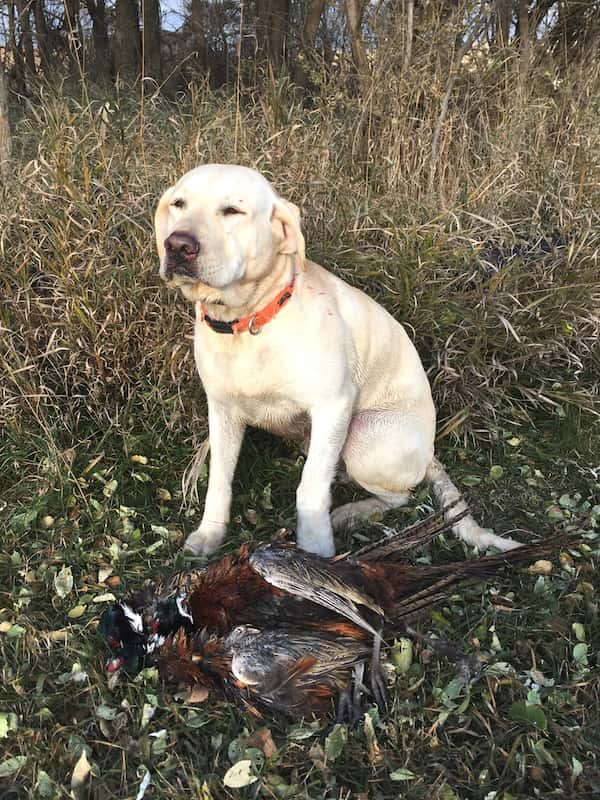
Our Outdoors: Swamping It
By Nick Simonson
The roaring winds of Saturday dipped only slightly on Sunday morning as we made our way into the field to close out a weekend of pheasant hunting. Along with the slight decrease in the northwest gusts came a drop in temperature and the dashboard readout on the truck posted 22 degrees. It was the first cold-feeling day of the fall in my opinion, even with the snow at mid-month which, now two weeks behind us, seemed like a bad dream. The occasional flake that drifted down and was whipped by the wind across the red hood of the truck, however, warned that the abnormally strong chill of fall was indeed real.
Fueled by coffee, anticipation and the knowledge of many previous hunts which started in the same place – a slough complex just to the west of town and across the fill from the family farmstead – my toes twitched in the oversized swamp walkers that had stepped up to replace my standard field boots for the walk, as nature worked in a new wrinkle which gave the pheasants an advantage and likely kept many other hunters at bay.
Each day, from the drive up to the trip home, my buddy’s comment was the same: “I can’t believe how green it is” as we walked pastures, CRP and the treelines of the western stretch, which usually by August or September had turned to beige and gold with summer’s heat and dryness.
Here in late October, however, even the cattails in the expanse before us still sported verdant bases as the late-season moisture stacked up around them. Sunday’s cool down brought with it an icy cap to the water in the lowlands, and each step of my big boots cracked the thin layer of ice around the swamp grasses and reeds as we walked in for our final hunt of the weekend before heading home.
With the predominantly northwest winds blowing strong for the previous two days, we encountered the pheasants where we had seen them upon our arrival: deep in the slop, stacked up on piled grasses and folded cattails just above the water. While the area was still very wet, the bends and curves and open pockets on the eastern edge of the slough provided a bunker against the blowing wind and an area of easy escape for the dozens of hens and roosters we encountered. On a first attempt, my normal field boots would not allow for much exploration of the deeper edge along the thick cover, and our dogs did most of the work, rambling into the cattails and sending fluff flying at us on the gales as the black-bodied birds rose and often curled with the gusts to present a shot. In the adjacent grasses, where moisture was less, the occasional rooster would also rise, providing a surprise opportunity which came to be more expected as the weekend wore on.
We had little competition for the open stretch of unposted land which I had hunted since my first upland adventure in the area nearly two decades ago. The occasional hunting rig would drive around on the gravel road to the west of our vantage point, where we would sip coffee and wait for the dull, cloudy light of sunrise to better illuminate the birds as they flushed, knowing that we had the east edge and there was plenty of land on the west side for others, if they wanted it. If they were hunters though, the dense and tangled cattail slough certainly provided a challenge – even in dry years – but in this particular season it seemed we were the only ones willing to explore it with the water added into the mix. It was also likely that no one took advantage of it after us, as each morning the birds seemed to reset in the same cuts and turns in the cattails. The points provided a familiar reference on each walk, reminding us to get ready for the shooting gallery that was to come with the trek that soaked the back of field pants from water sprayed by each rising boot and chilled the hands with the return of a downed rooster soaked in the cold water beneath the vegetation.
Two thirds of our bagged birds came from the swampy expanse and more than three-quarters of our shooting opportunities. The two hard-working dogs rousted them from the edges of the thick stuff and made dazzling detective-like retrieves in the slushy sloppiness of the almost frozen slough. It was a reminder that pheasants have an uncanny ability to exploit their light weight, whether on a thin sheet of ice or a bridge of swamp reeds, and duck into those places seemingly more suitable for waterfowl at times. While we picked up a couple of birds here and there in the highlands we hunted nearby and around the old farmstead, none of the usual places provided the spectacular opportunities of the slough, turned swamp, turned pheasant haven which made for a challenging hunt and a memorable adventure…in our outdoors.

